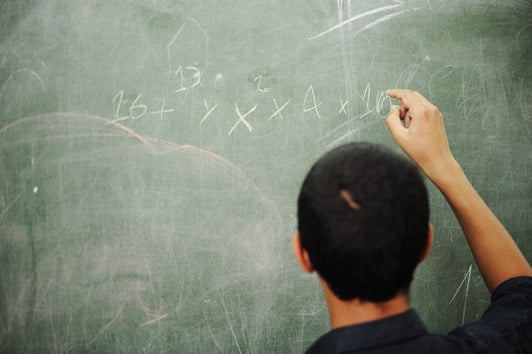 When you hear the word "narrative," it is often used synonymously with the word "story." A narrative can be fiction or non-fiction and involves a character or a series of characters that tell a story. Typically, when the story is non-fiction, the narrator will be the author themselves. Narrative writing can tell any kind of story from what goes on in your daily life to an extraordinary tale of heroism. Details are important to a narrative as they help to show the author's clear purpose. Narrative writing is a form of writing that is important to your child's everyday life. It is how they communicate what goes on during their day and how they feel.
When you hear the word "narrative," it is often used synonymously with the word "story." A narrative can be fiction or non-fiction and involves a character or a series of characters that tell a story. Typically, when the story is non-fiction, the narrator will be the author themselves. Narrative writing can tell any kind of story from what goes on in your daily life to an extraordinary tale of heroism. Details are important to a narrative as they help to show the author's clear purpose. Narrative writing is a form of writing that is important to your child's everyday life. It is how they communicate what goes on during their day and how they feel.
What Makes Narrative Writing Different?
Narrative writing is different than descriptive writing as it tells a story through details, but there is always clearly a start, body, and conclusion. Descriptive writing uses details to paint a picture in the reader's mind of a time, a person, a place, or event, though it doesn't require that there be a full story to it. It is also different from expository writing in the fact that while expository writing follows a pattern and progression, it's steps in a process, reasons, or explanation for why something is. It will have a main idea, followed by supporting details, and then a conclusion.
What are the Building Blocks of Narrative Writing?
A narrative writing piece is defined by its story format. To be considered a narrative piece it will need to contain several components. A true narrative piece will always contain:
- A Plot - A plot is the broad thought behind the series of events that are contained in the narrative, and essentially what makes the narrative work. A plot will include the background, conflict, climax, and conclusion of the story. The plot of the story is usually mapped out before writing and used as an outline.
- A Setting - Setting is important to a story as it helps your reader to be transported into the story. It creates the time, environment, and place where the story takes place.
- Characters - A narrative will also have characters. It is the characters that create the story as they are the ones the reader is supposed to fall in love with, empathize with, and root for during the story. The story should convey the character's behaviors, circumstances, and motivations. Every narrative should have one character, but they do not have to be human.
- Point of View - To help understand the motivations behind why the story is being told, the narrative must establish a point of view. A point of view is from what perspective the story is being told. With narratives, it will typically be first or third-person.
- Theme - A narrative will have a clear theme which helps guide the focus of the narrative. A theme helps to show the lessons that the character learned or what the takeaway of the story is.
- Symbolism - While symbolism is not exactly a requirement for a narrative, it is often used and can really help keep readers engage in the story. It is a literary element that provides greater meaning to a simple part of the story such as a color or an object.
- Conflict - The conflict in the story is what gives the characters their motivation. The conflict is what the characters have to work through in the story to reach the conclusion.
Helping Your Child with Narrative Writing
Getting your child starting with narrative writing is easy. All children love to tell stories. It is just important to help them break down the components, so they learn how to make it flow right. Start by letting your child know that they can find stories to tell everywhere and it is sometimes easiest to have them start with something they know, so they can get the format down and it can be less difficult. Have them pick a few topics that they think they would enjoy writing about.
Once they have a topic, have them focus on outlining the different components. Have them start with the characters by making a list of character traits, descriptions, and behaviors. Follow next with the setting of the story, having them to create a list of descriptive words about it. Then have them come up with the theme of the story and the conflict. They need to know what the reader is supposed to learn from the story and the conflict that needs to happen for the character to learn this lesson. Don't try to get overly complicated, have them start with something simple, such as getting over shyness to meet new friends.
Once they have all of their pieces, read them a few examples, so they can get an idea with how they are supposed to structure it. Then have them start writing, putting all of their information into a sequential story. Don't stop them while they are writing. Let them get all of their ideas on paper. Then have them read the story and fix any issues where the flow seems to be lacking.
Want to help your child get the best start at learning how to write or hone their writing skill? Reading Genie offers writing instructions for children from three to 13.





